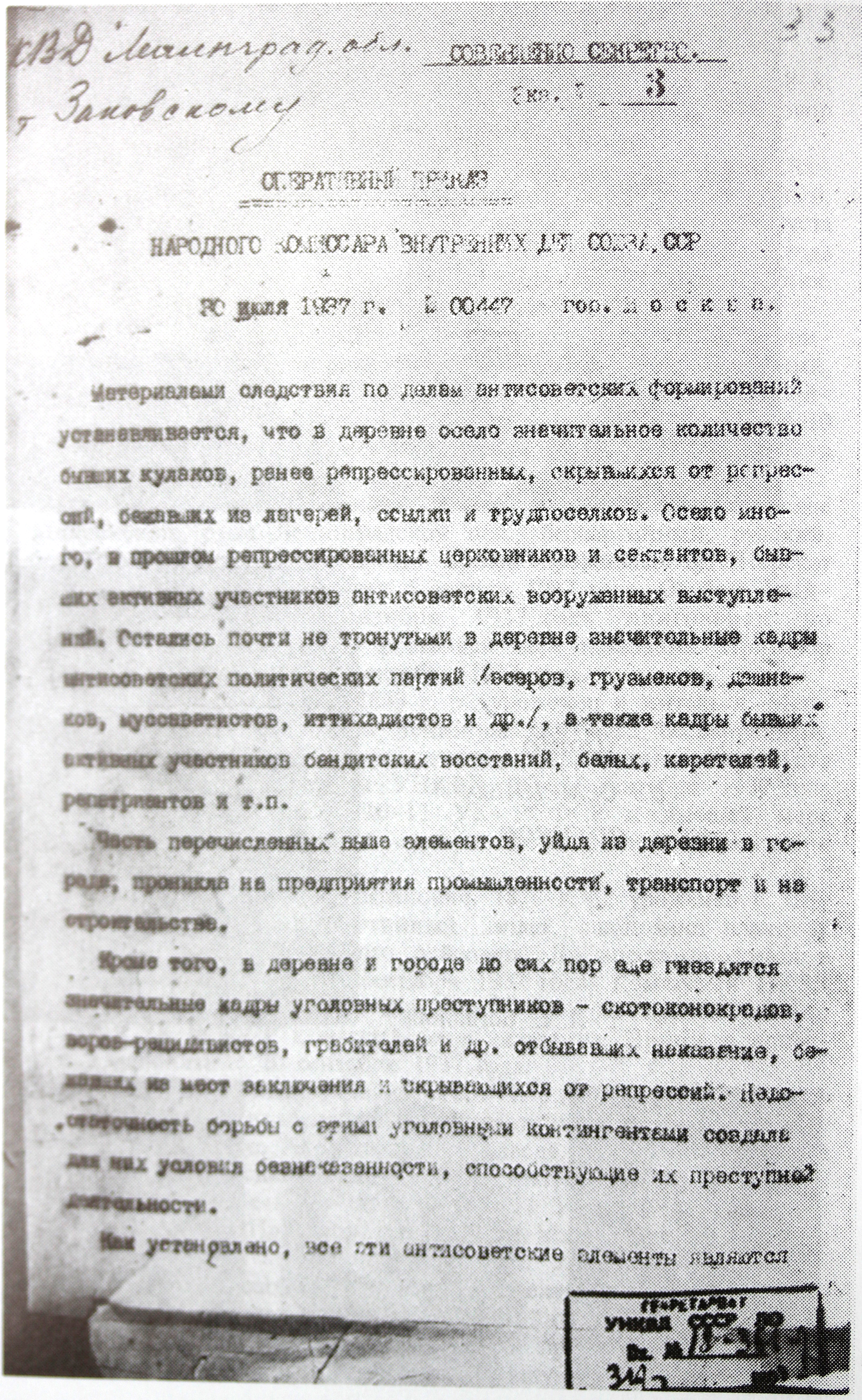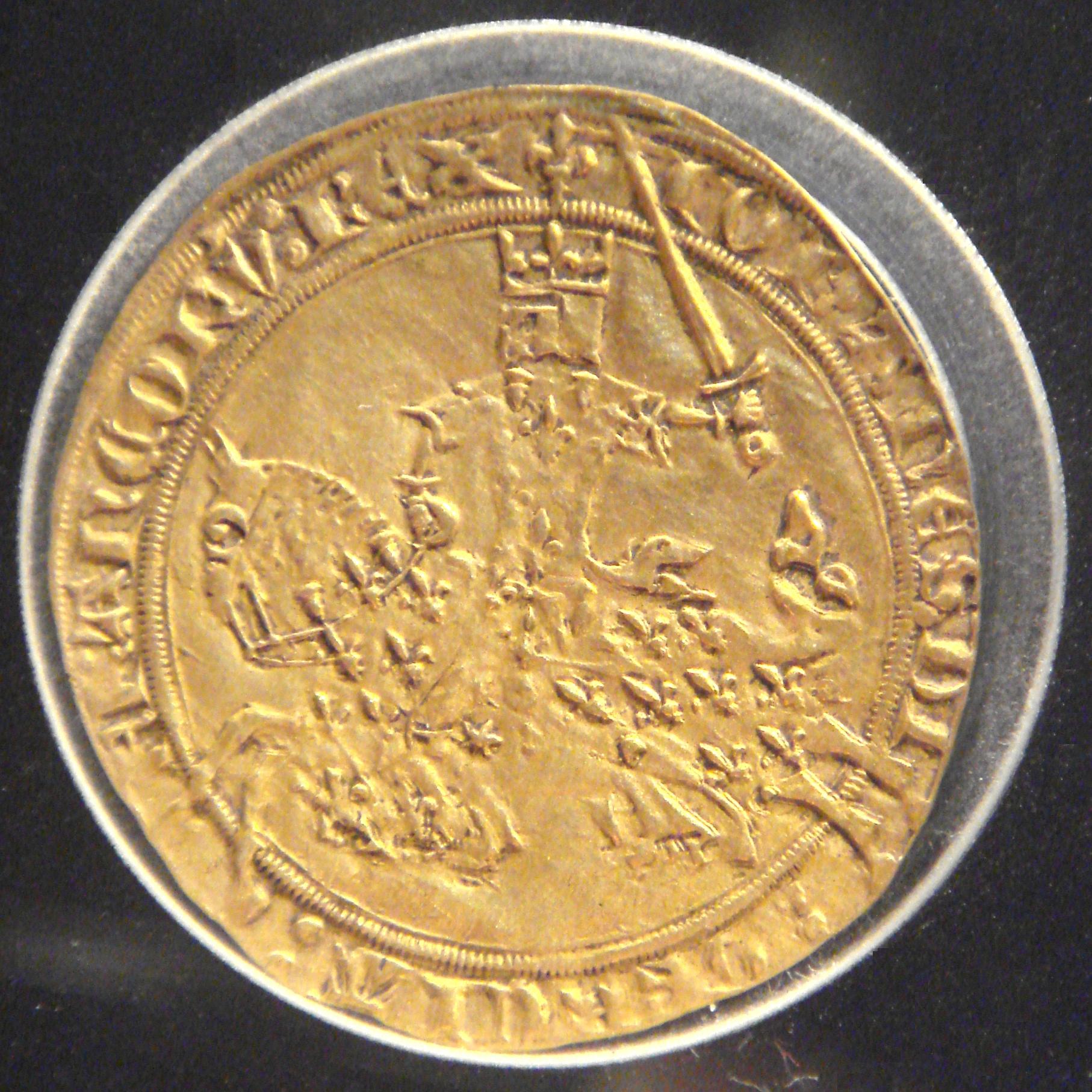|
Alexey Startsev
Alexey Dmitriyevich Startsev (Russian: Алексей Дмитриевич Старцев; (1838, Novoselenginsk - 30 June 1900, Putyatin Island) was a Russian merchant and industrialist. Biography He was a common-law child of the painter, Nikolay Bestuzhev, and a Buryat woman from Petrovsk-Zabaykalsky. After his father's death in 1855, he went to live with his godfather, Dmitry Dmitriyevich Startsev, a local merchant. At first, he worked as a clerk for Startsev, then for , a guild merchant in Kyakhta. In 1861, he joined a trade caravan to China. There, he became involved in the tea trade, which made him wealthy. By the time of his death, he was a millionaire. He built forty stone houses and a printing plant in Tianjin, as well as a two-mile long demonstration railway and telegraph lines. He also helped establish the Russo-Chinese Bank, and served as one of its board members. In addition. he spoke Buryat, Mongolian, Chinese, and several European languages, often serving ... [...More Info...] [...Related Items...] OR: [Wikipedia] [Google] [Baidu] |
Alexey Dmitriyevich Startsev
Alexey, Alexei, Alexie, Aleksei, or Aleksey (russian: Алексе́й ; bg, Алексей ) is a Russian and Bulgarian male first name deriving from the Greek ''Aléxios'' (), meaning "Defender", and thus of the same origin as the Latin Alexius. Alexey may also be romanized as ''Aleksei'', ''Aleksey'', ''Alexej'', ''Aleksej'', etc. It has been commonly westernized as Alexis. Similar Ukrainian and Belarusian names are romanized as Oleksii (Олексій) and Aliaksiej (Аляксей), respectively. The Russian Orthodox Church uses the Old Church Slavonic version, Alexiy (Алексiй, or Алексий in modern spelling), for its Saints and hierarchs (most notably, this is the form used for Patriarchs Alexius I and Alexius II). The common hypocoristic is Alyosha () or simply Lyosha (). These may be further transformed into Alyoshka, Alyoshenka, Lyoshka, Lyoha, Lyoshenka (, respectively), sometimes rendered as Alesha/Aleshenka in English. The form Alyosha may be us ... [...More Info...] [...Related Items...] OR: [Wikipedia] [Google] [Baidu] |
Putyatin (urban-type Settlement)
Putyatin (russian: Путятин) is an urban locality (an ''urban-type settlement'') under the administrative jurisdiction of the closed town of Fokino in Primorsky Krai, Russia Russia (, , ), or the Russian Federation, is a transcontinental country spanning Eastern Europe and Northern Asia. It is the largest country in the world, with its internationally recognised territory covering , and encompassing one-eigh .... Population: References Urban-type settlements in Primorsky Krai {{PrimorskyKrai-geo-stub ... [...More Info...] [...Related Items...] OR: [Wikipedia] [Google] [Baidu] |
Great Purge
The Great Purge or the Great Terror (russian: Большой террор), also known as the Year of '37 (russian: 37-й год, translit=Tridtsat sedmoi god, label=none) and the Yezhovshchina ('period of Yezhov'), was Soviet General Secretary Joseph Stalin's campaign to solidify his power over the party and the state; the purges were also designed to remove the remaining influence of Leon Trotsky as well as other prominent political rivals within the party. It occurred from August 1936 to March 1938. Following the death of Vladimir Lenin in 1924 a power vacuum opened in the Communist Party. Various established figures in Lenin's government attempted to succeed him. Joseph Stalin, the party's General Secretary, outmaneuvered political opponents and ultimately gained control of the Communist Party by 1928. Initially, Stalin's leadership was widely accepted; his main political adversary Trotsky was forced into exile in 1929, and the doctrine of " socialism in one country" b ... [...More Info...] [...Related Items...] OR: [Wikipedia] [Google] [Baidu] |
October Revolution
The October Revolution,. officially known as the Great October Socialist Revolution. in the Soviet Union, also known as the Bolshevik Revolution, was a revolution in Russia led by the Bolshevik Party of Vladimir Lenin that was a key moment in the larger Russian Revolution of 1917–1923. It was the second revolutionary change of government in Russia in 1917. It took place through an armed insurrection in Petrograd (now Saint Petersburg) on . It was the precipitating event of the Russian Civil War. The October Revolution followed and capitalized on the February Revolution earlier that year, which had overthrown the Tsarist autocracy, resulting in a liberal provisional government. The provisional government had taken power after being proclaimed by Grand Duke Michael, Tsar Nicholas II's younger brother, who declined to take power after the Tsar stepped down. During this time, urban workers began to organize into councils ( soviets) wherein revolutionaries criticized t ... [...More Info...] [...Related Items...] OR: [Wikipedia] [Google] [Baidu] |
Sculpture Of Mongolia
Works of sculpture have been crafted in Mongolia since prehistoric times. Bronze Age megaliths known as deer stones depicted deer in an ornamented setting. Statues of warriors, the Kurgan stelae, were created under Turkic rule from the 6th century CE, and later started to bear inscriptions in a phonetic script, the Orkhon script, which were deciphered only in the 1980s. Warrior statues continued under the Uighurs, who also made a gold image of the Buddha. Many examples of sculptures of people and animals, as well as carved stelae, are known from the Mongol Empire, especially from its capital Karakorum. The spread of Buddhism in Mongolia from the 16th century was associated with a cultural revival which included the work of the sculptor Zanabazar (1635–1723), famous for his human forms in bronze depicting figures from the Buddhist tradition. Also known from this period are the ornate masks used in the mystic Cham dances. A sharp change in Mongolian art followed the revolution of ... [...More Info...] [...Related Items...] OR: [Wikipedia] [Google] [Baidu] |
Franc
The franc is any of various units of currency. One franc is typically divided into 100 centimes. The name is said to derive from the Latin inscription ''francorum rex'' (King of the Franks) used on early French coins and until the 18th century, or from the French ''franc'', meaning "frank" (and "free" in certain contexts, such as ''coup franc'', "free kick"). The countries that use francs today include Switzerland, Liechtenstein, and most of Francophone Africa. The Swiss franc is a major world currency today due to the prominence of Swiss financial institutions. Before the introduction of the euro in 1999, francs were also used in France, Belgium and Luxembourg, while Andorra and Monaco accepted the French franc as legal tender ( Monégasque franc). The franc was also used within the French Empire's colonies, including Algeria and Cambodia. The franc is sometimes Italianised or Hispanicised as the ''franco'', for instance in Luccan franco. Origins The franc was origina ... [...More Info...] [...Related Items...] OR: [Wikipedia] [Google] [Baidu] |
Louvre
The Louvre ( ), or the Louvre Museum ( ), is the world's most-visited museum, and an historic landmark in Paris, France. It is the home of some of the best-known works of art, including the ''Mona Lisa'' and the ''Venus de Milo''. A central landmark of the city, it is located on the Right Bank of the Seine in the city's 1st arrondissement (district or ward). At any given point in time, approximately 38,000 objects from prehistory to the 21st century are being exhibited over an area of 72,735 square meters (782,910 square feet). Attendance in 2021 was 2.8 million due to the COVID-19 pandemic, up five percent from 2020, but far below pre-COVID attendance. Nonetheless, the Louvre still topped the list of most-visited art museums in the world in 2021."The Art Newspaper", 30 March 2021. The museum is housed in the Louvre Palace, originally built in the late 12th to 13th century under Philip II. Remnants of the Medieval Louvre fortress are visible in the baseme ... [...More Info...] [...Related Items...] OR: [Wikipedia] [Google] [Baidu] |
Boxer Rebellion
The Boxer Rebellion, also known as the Boxer Uprising, the Boxer Insurrection, or the Yihetuan Movement, was an anti-foreign, anti-colonial, and anti-Christian uprising in China between 1899 and 1901, towards the end of the Qing dynasty, by the Society of Righteous and Harmonious Fists (), known as the "Boxers" in English because many of its members had practised Chinese martial arts, which at the time were referred to as "Chinese boxing". After the Sino-Japanese War of 1895, villagers in North China feared the expansion of foreign spheres of influence and resented the extension of privileges to Christian missionaries, who used them to shield their followers. In 1898 Northern China experienced several natural disasters, including the Yellow River flooding and droughts, which Boxers blamed on foreign and Christian influence. Beginning in 1899, Boxers spread violence across Shandong and the North China Plain, destroying foreign property such as railroads and attacking or ... [...More Info...] [...Related Items...] OR: [Wikipedia] [Google] [Baidu] |
East Asian Studies
East Asian studies is a distinct multidisciplinary field of scholarly enquiry and education that promotes a broad humanistic understanding of East Asia past and present. The field includes the study of the region's culture, written language, history and political institutions. East Asian Studies is located within the broader field of Asian studies and is also interdisciplinary in character, incorporating elements of the social sciences ( anthropology, economics, sociology, politics etc.) and humanities ( literature, history, art, film, music, etc.), among others. The field encourages scholars from diverse disciplines to exchanges ideas on scholarship as it relates to the East Asian experience and the experience of East Asia in the world. In addition, the field encourages scholars to educate others to have a deeper understanding of and appreciation and respect for, all that is East Asia and, therefore, to promote peaceful human integration worldwide. At universities throu ... [...More Info...] [...Related Items...] OR: [Wikipedia] [Google] [Baidu] |
Buddhist
Buddhism ( , ), also known as Buddha Dharma and Dharmavinaya (), is an Indian religion or philosophical tradition based on teachings attributed to the Buddha. It originated in northern India as a -movement in the 5th century BCE, and gradually spread throughout much of Asia via the Silk Road. It is the world's fourth-largest religion, with over 520 million followers (Buddhists) who comprise seven percent of the global population. The Buddha taught the Middle Way, a path of spiritual development that avoids both extreme asceticism and hedonism. It aims at liberation from clinging and craving to things which are impermanent (), incapable of satisfying ('), and without a lasting essence (), ending the cycle of death and rebirth (). A summary of this path is expressed in the Noble Eightfold Path, a training of the mind with observance of Buddhist ethics and meditation. Other widely observed practices include: monasticism; "taking refuge" in the Buddha, the , and the ... [...More Info...] [...Related Items...] OR: [Wikipedia] [Google] [Baidu] |
Russian Geographical Society
The Russian Geographical Society (russian: Ру́сское географи́ческое о́бщество «РГО»), or RGO, is a learned society based in Saint Petersburg, Russia. It promotes geography, exploration and nature protection with research programs in fields including oceanography, ethnography, ecology and statistics. History Imperial Geographical Society The society was founded in Saint Petersburg, Russia on 6 (18) August 1845. Prior to the Russian Revolution of 1917, it was known as the Imperial Russian Geographical Society. The order to establish the society came directly from Emperor Nicholas I. The motive for the establishment was to encourage geographical research on domestic topics, which has later been described as a Russian nationalist political goal. The filial societies were established at the Caucasus (1850), Irkutsk (1851), Vilnius (1867), Orenburg (1868), Kiev (1873), Omsk (1877), and other cities. The Society organized and funded the expe ... [...More Info...] [...Related Items...] OR: [Wikipedia] [Google] [Baidu] |






